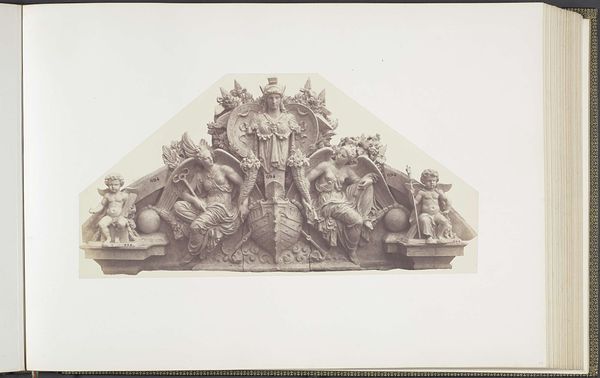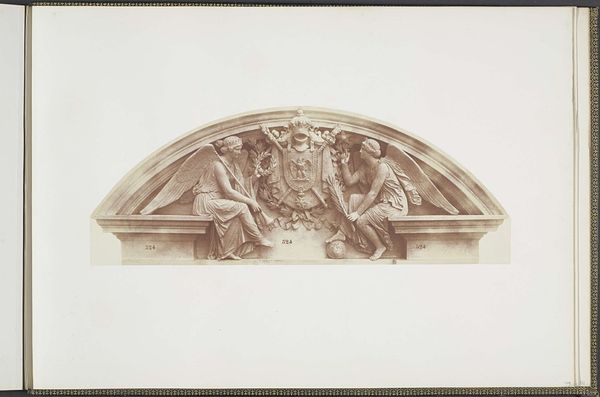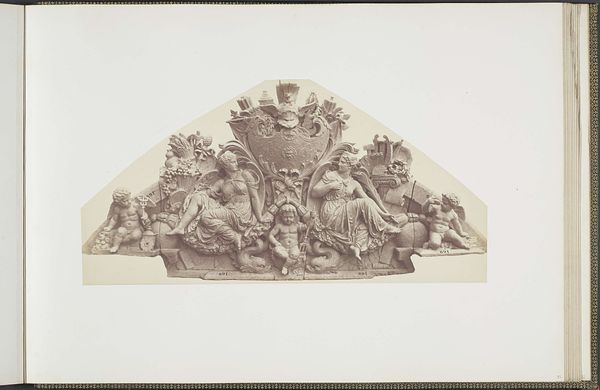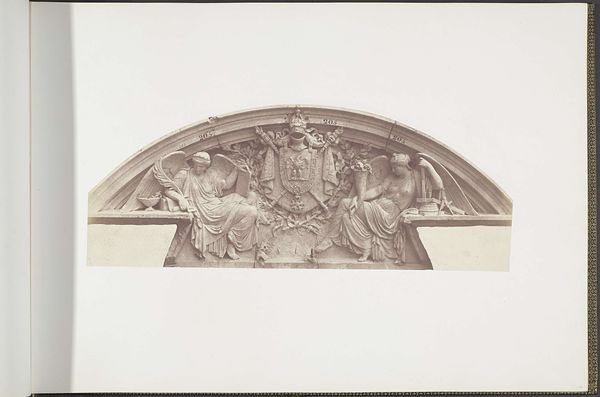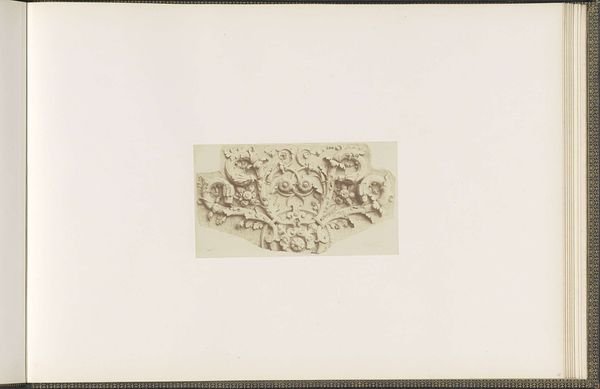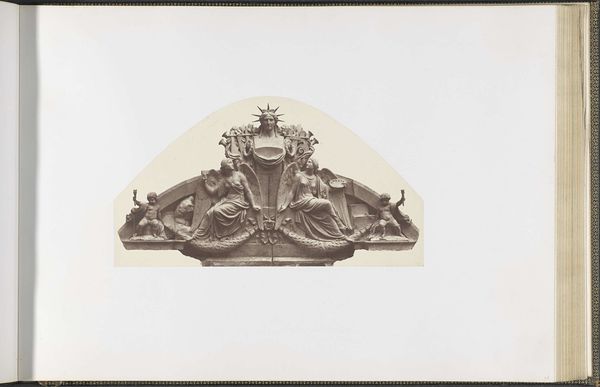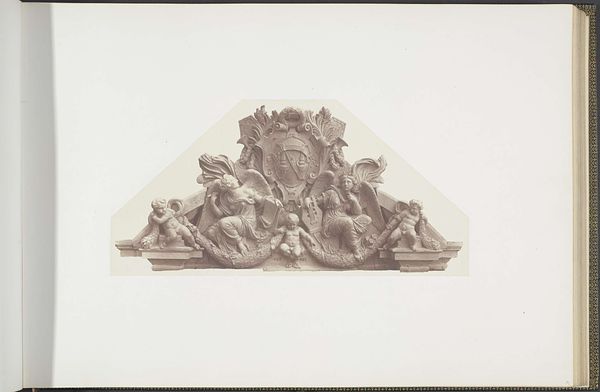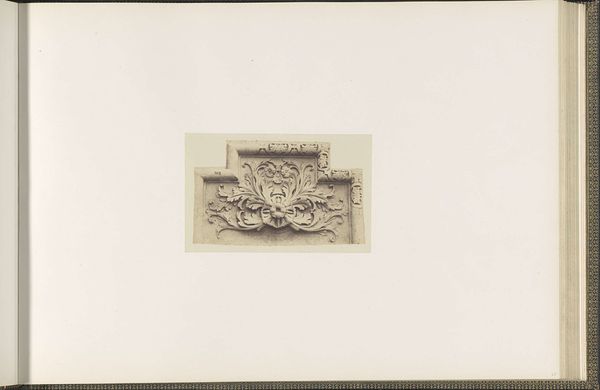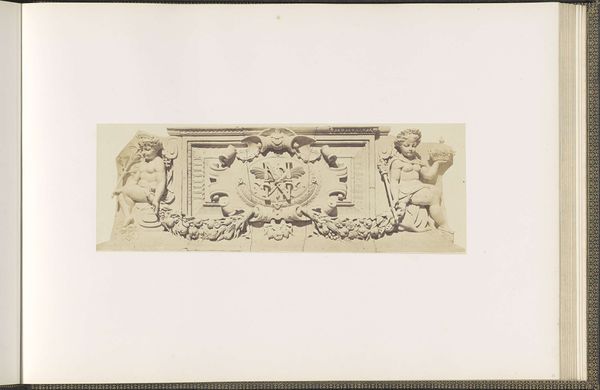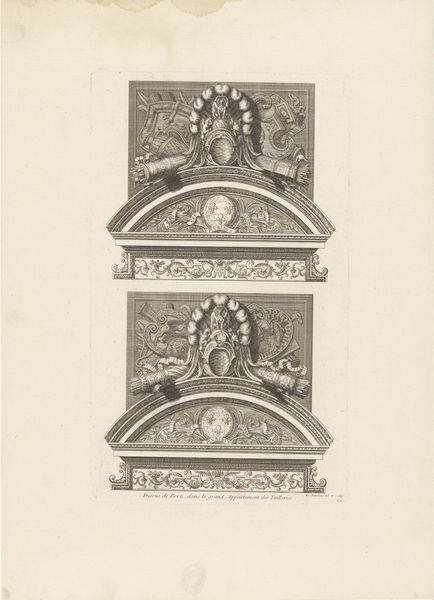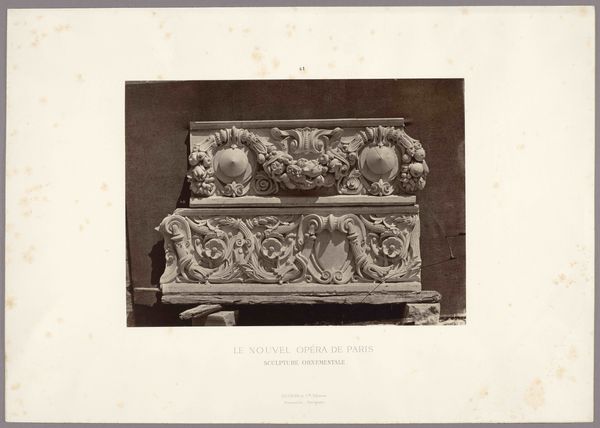
Gipsmodel voor beeldhouwwerk op het Palais du Louvre: "La Terre et l'Eau" door Victor Vilain c. 1855 - 1857
0:00
0:00
edouardbaldus
Rijksmuseum
print, photography, sculpture, gelatin-silver-print
#
neoclacissism
#
allegory
# print
#
classical-realism
#
figuration
#
photography
#
sculpture
#
gelatin-silver-print
#
history-painting
Dimensions: height 378 mm, width 556 mm
Copyright: Rijks Museum: Open Domain
Editor: This is a photograph, a gelatin silver print by Edouard Baldus, depicting Victor Vilain's plaster model, circa 1855-1857, for the sculpture "La Terre et l'Eau" intended for the Palais du Louvre. It’s a fairly symmetrical composition with figures that seem to represent the earth and water... maybe goddesses of some kind? What stands out to you, particularly in how the image conveys its meaning? Curator: I am struck by the persistence of classical symbols and their ability to speak to shifting cultural values. The female figures embody “La Terre et l’Eau”, but what did those concepts signify in mid-19th century France, particularly within the context of the Louvre? Consider the rise of nationalism: Do these figures function simply as representations of earth and water, or do they also represent the bounty and resources of France itself, its dominion over its physical environment? Editor: That's a compelling idea. So, beyond the surface-level understanding of earth and water, you're suggesting it’s about control and national identity? I see symbols of power in the cornucopia and the rudder or steering oar the figure of Water holds. What about the putti or cherubic figures that flank them? Curator: Exactly. The putti further reinforce that connection. We can look at their attributes. Notice how their presence isn’t just decorative. Their inclusion anchors this sculpture in a longer tradition of allegorical representation and bestows a kind of timeless legitimacy upon the national project. The continuity of those figures resonates through history. What are your thoughts about the implied context of French history? Editor: I hadn’t considered it in terms of national identity so directly, but the symbolism is very deliberately constructed. Thinking about the historical context certainly enriches the photograph. Curator: Indeed. These symbols invite a reading far beyond the simple, neoclassical figures. Recognizing the layers of meaning embedded within, we can gain a richer appreciation for the cultural memory being invoked.
Comments
No comments
Be the first to comment and join the conversation on the ultimate creative platform.
